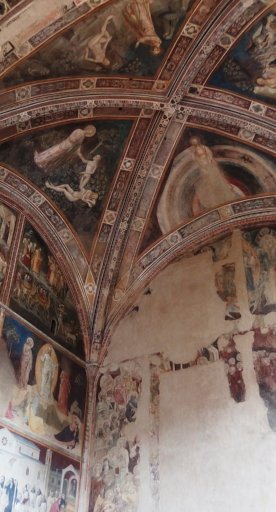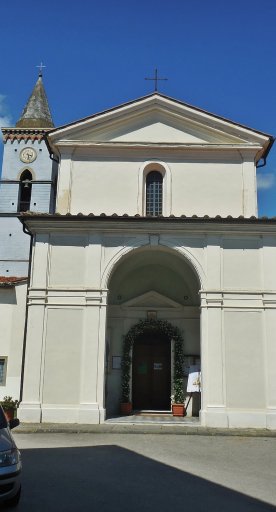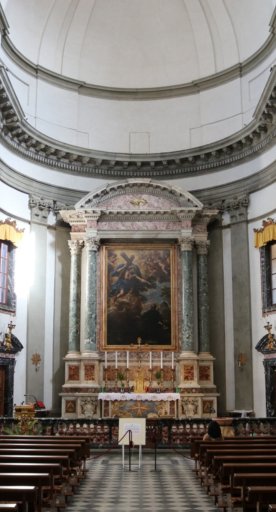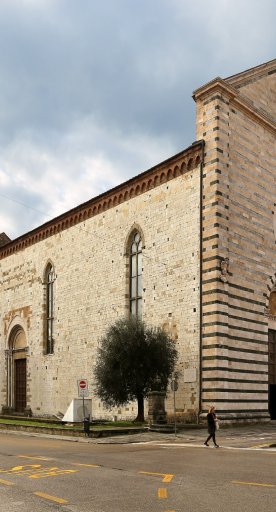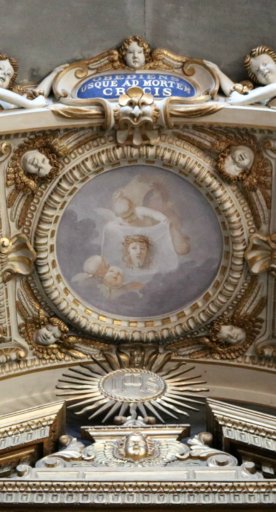Church of San Bartolomeo in Pantano
The pulpit of Guido da Como and the San Bartolomeo Fair
The Church of San Bartolomeo, of Lombard origin, today presents the style and features brought by the extension works of 1159. The Romanesque façade is punctuated by five blind arcades and three portals. The central portal has a lintel carved in high relief with Christ and the Twelve Apostles by sculptor Gruamonte (1167), who was active in Pistoia in the 12ᵗʰ century. The three-aisled interior has columns with capitals decorated with anthropomorphic, zoomorphic and phytomorphic motifs.
The pulpit, by sculptor Guido da Como, dates back to the mid-13ᵗʰ century. Quadrangular in shape, it is adorned with pictures sculpted in bas-relief, depicting four Gospel scenes. The pulpit rests on a column set on the back of a hunched-over man and two stylophore lions, one of which holds a basilisk between its paws, while the other depicts a lioness with suckling cub. A fragment of a fresco depicting Saint Bartholomew the Apostle holding a book in his left hand is preserved in the chancel. The pictorial work is attributed to an unknown artist from the 13ᵗʰ-century Florentine school.
Held every year on August 24 is the traditional Fiera di San Bartolomeo, a fair dedicated to the protector of children, during which people can participate in the ritual of blessing oil then receiving an anointing, considered auspicious especially for little ones. During the festival, the piazza of the Church of San Bartolomeo and the neighboring streets are embellished by booths with games and sweets, including the Corona di San Bartolomeo, a necklace of shortbread cookies (known as “pippi”) alternating with Pistoia’s famous sugared almonds, candies and chocolates, being the typical confectionery product of the Fiera di San Bartolomeo.
The church is also the final destination of the Cammino di San Bartolomeo, a pilgrimage walking route that retraces the places dedicated to the worship of the saint, starting out from Fiumalbo and passing through the villages of Cutigliano, by the Towers of Popiglio, through San Marcello Pistoiese and the Acquerino-Cantagallo Nature Reserve.
Interestingly, the use of columns, arches, reliefs carved into the lintels and, in particular, two-tone façades characterize the Pistoia-Romanesque churches of Sant’Andrea, San Bartolomeo, San Pier Maggiore and San Giovanni Fuorcivitas, representing the most important examples of “Pistoia-Romanesque.”



